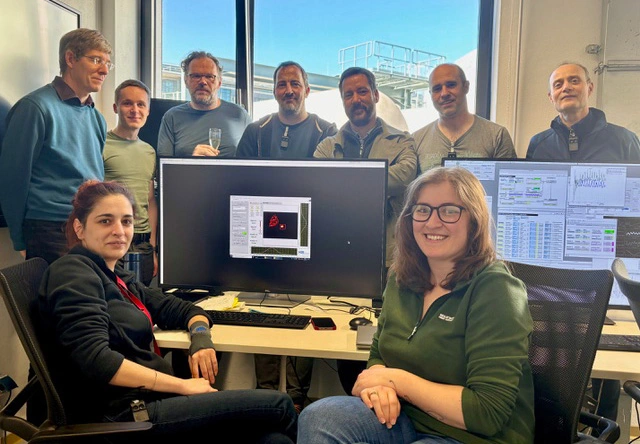Breakthrough: First electron beam in SEALab advances accelerator physics
HZB team generates and accelerates an electron beam from a multi-alkali photocathode
The SEALab team at HZB has achieved a world first by generating an electron beam from a multi-alkali (Na-K-Sb) photocathode and accelerating it to relativistic energies in a superconducting radiofrequency accelerator (SRF photoinjector). This is a real breakthrough and opens up new options for accelerator physics.
This success paves the way for the further development of superconducting radio-frequency accelerators (SRF photoinjectors) for high-brilliancy electron sources. The achievement holds significant potential for applications in free-electron lasers, energy recovery linac (ERL) class accelerators, detector development and ultrafast electron scattering experiments (UED).
Years of dedicated work, first in the bERLinPro project and then in the SEALAB team, have been invested to achieve this success. There were numerous challenges along the way, including delays due to the COVID-19 pandemic and the cyber attack. Despite this, the team has made great progress. The successful test generated an average current in the microampere range at a repetition rate of 1 MHz, demonstrating the viability of the sodium-based photocathode in combination with SRF acceleration.
Axel Neumann, SEALab project manager, emphasises: ‘This great success is the result of many dedicated individuals who contributed to bERLinPro and SEALab over the past years, often under high levels of stress. We also thank all former team members who were involved in the original project.’
Thorsten Kamps, deputy project manager, now sees the fruits of the intensive work for the photoinjector: ‘We have completely revamped the preparation and characterisation of photocathodes in recent years and are now seeing the success. This will have a significant impact on similar projects.’
With this successful test, the SEALab team has demonstrated that it is possible to use a robust multi-alkali photoemissive source to accelerate an electron beam in an SRF photoinjector to relativistic energies and at a high repetition rate. These results could help to further improve the performance of the next generation of electron injectors. The SEALab team will now also investigate the different beam parameters to expand the possibilities of SRF photoinjectors.
Contact:
Helmholtz-Zentrum Berlin für Materialien und Energie
www.helmholtz-berlin.de
Dr. Axel Neumann
SEALab project manager
+49 30 8062-17917 / +49 30 8062-14669
axel.neumann(at)helmholtz-berlin.de
Prof. Dr. Thorsten Kamps
Deputy project manager
+49 30 8062-15157
kamps(at)helmholtz-berlin.de
Press release HZB, 3 April 2025
